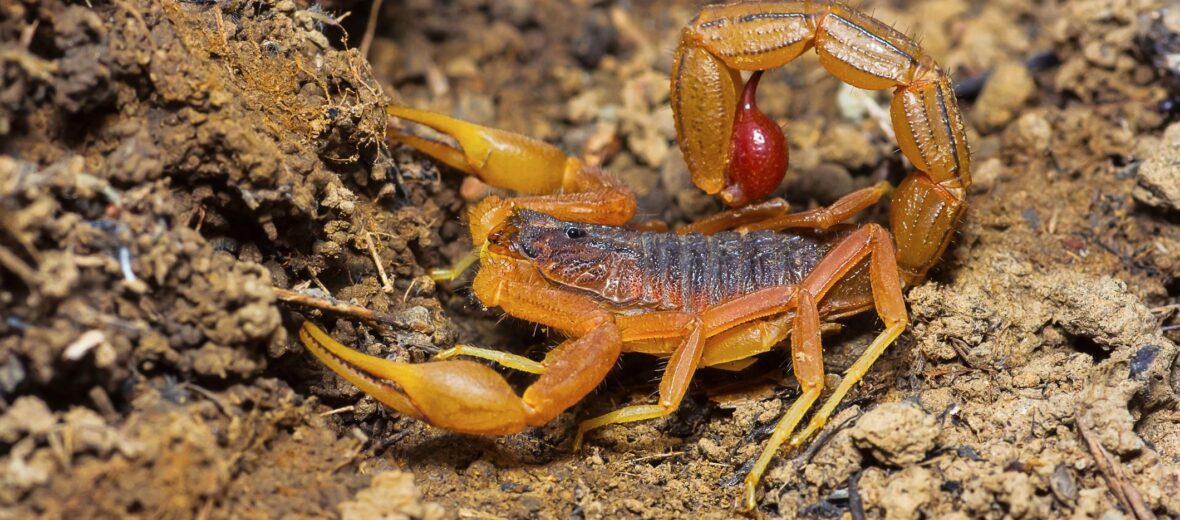
The Indian red scorpion, aka eastern Indian scorpion, is thought by many to be the world’s deadliest known scorpion. Their fatality rate is, by far, the highest of any other known scorpion species. However, these arachnids aren’t out for blood. They only want to eat other bugs and to be left alone. However, step on one or start poking around with one and you’ll definitely get the dirty end of the stick. You can find these dangerous critters in India, eastern Pakistan, the eastern lowlands of Nepal, and Sri Lanka.
First the Stats…
Scientific name: Hottentotta tamulus
Length: Up to 3.5 inches
Lifespan: Up to 5 years
Now on to the Facts!
1.) Indian red scorpions are able to survive for up to a year without food or water.
2.) Just like all scorpions, these critters are nocturnal (active at night).
3.) Like all scorpions, Indian reds will fluoresce under a black light and the full moon light.
4.) Without antivenom, you have a chance of dying within 72 hours of being stung.
5.) Most victims are children.
But wait, there’s more on the Indian red scorpion!
6.) Antivenom has very little effect in clinical treatment. However, the use of prazosin reduces the mortality rate to less than 4%. But there is still that 4%.
7.) Their venom primarily attacks the pulmonary and cardiovascular systems. This ultimately leads to a pulmonary oedema and potential death.
Did you know…?
The fatality rate of an untreated Indian red scorpion sting is up to 40%! This, of course, depends on the individual stung and their particular reaction. But still… 40%!
8.) They prey primarily on insects. However, they will also eat spiders and other scorpions. Sometimes they will even be bold enough to take on amphibians, reptiles, and rodents.
9.) As with many scorpions, the males will grasp the females by their pedipalps and perform a courtship “dance”. The male will then place a spermatophore on the ground and position the female over it to inseminate her. Then the male leaves to avoid being potentially eaten.
10.) Females give live birth up to as many as 20 or more scorplings. These young will camp out on mom’s back up until their second molt. Then they part ways.
Now a Short Indian Red Scorpion Video!
Also, check out the Critter Science YouTube channel. Videos added frequently!
Want to suggest a critter for me to write about? Let me know here.



